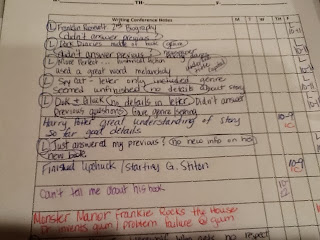So what have we been up to... I am so excited to say RESEARCH is my new favorite mode of delivering information. I never understood how powerful students questions were. I also never understood the point of the KWL chart until now. I was taught this organizer in college and to be honest I thought it was pretty dull. Who cares what you already know, and by the time you got to the learned part I was over the chart. It was a something I included in college lesson plans, but when I got to teaching in my actual classroom I didn't understand the value.
Well let me tell you the KWL is now my favorite organizer for research!
In my school our RTI focus is on reading fluency. To accomplish this we establish a baseline fluency score simply based on correct words per minute. We divide all the students in the entire building into intervention groups based on about 10 word per minute groups. I happen to have one of the highest fluency groups in third grade. These students are already reading around 135 CWPM, so they are considered fluent. Instead of continuing to practice fluency passages we have decided to open them up to the world of research.
I pull a fluency passage and we read through it and pick it apart. Using the information fromt he passage for the KNOW part of our KWL. Then I simply open it up to questions that they want to know. Students copy the same KWL into their journals so that they can record their answers as they go. As you can see below we were researching the Great Wall of China. The students ask great questions, and they are so excited to jump in and find the answers. (in this setting the kids are all on the same higher level, however, I have done this with my entire class and it was still very successful).
 |
You can record ideas in a couple different ways. Students can call out their answers and you can record them on the chart. Students can come up and write their answers on the chart themselves. You can stop the class the last 10 min. and record your answers together. One thing I do that the kids love, it to record their name next to the answer they offer.
As my principal says "The process is way more important than the product". So this gives you permission to just find the answers and move on to another topic...or you can turn your answers into a paragraph, or flipbook etc. If you have mobile technology then there are great apps out their to create a product. I love Explain Everything ($) and Educreations (free) (slide show presentations with voice over capabilities), Hakiu Deck (free) (beautiful slide show presentations).
The possibilities are endless, and it has opened up a whole other world of instruction to me. Especially, in science and social studies. Imagine letting students discover the water cycle instead of reading about it in their science text book. Or discovering the patterns we see in the sky instead of me telling them about it. Simply by throwing up a KWL chart! Even if student's didn't mention the questions you needed them to find out, you could easily add questions of your own mixed with their questions.
I know this is not new and earth shattering. I know that teacher's have been teaching this way for a long time, just not any teachers I know. But this is changing, by the hidden power of the KWL.
Stay tuned for details on our intensive Veterans Day research project.


